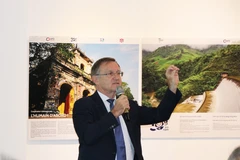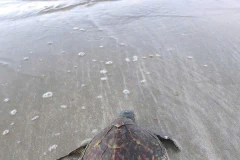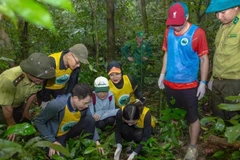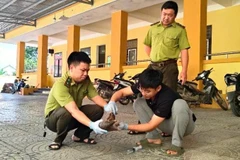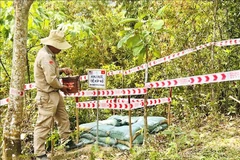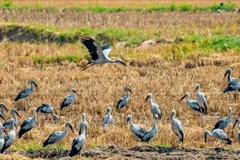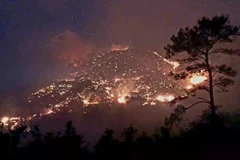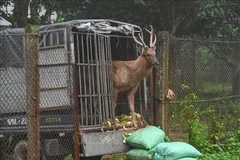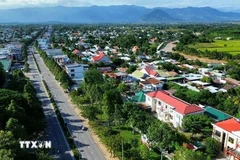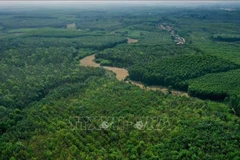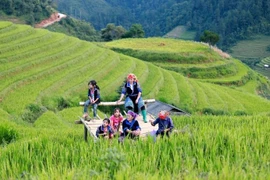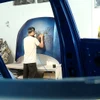“I thought it was a snake at first sight, but when I read thephoto caption I learned it is a caterpillar living in the south of Vietnam,”said Giang.
Giang was attending an exhibition titled “Pulsation – BiologicalDiversity in Vietnam and Taiwan,” which opened on December 1 at the HanoiMuseum. It is divided into two exhibit spaces featuring the natural diversityof Vietnam and Taiwan.
“Now I know that the Formosan sambar deer is the largest nativeanimal species in Taiwan and Dahanshan Cookeina sinensis fungus growsin clusters on the floor of humid forests,” Giang said. “At first glance, theyresemble little white cups, adorable in appearance.”
The Taiwan section showcases the works of landscape andecological photographers who have long been recording the mountains, rivers anddiverse life-forms of Taiwan, according to Shih-yu Hung, director of the nationalmuseum of Taiwan.
“Framed as works of art, this collection brings life and newvisual style to traditional landscape and ecological photography,” he said.“Through these images, one can observe the beauty of life arising from the richecological system and establish an emotional connection with nature.”
The exhibition offers visitors a visual tour to various placesin Taiwan such as Da An River, Mutelebu Peak, Xueshan Range and Lanyang River.
It is divided into five major themes exploring Taiwan’sgeographical and biological diversity.
The first one, "Rhythms of Nature", reveals how thediverse terrain of Taiwan combined with its humid climate havenurtured a highly variable ecosystem.
Nearly 60 percent of Taiwan is covered by forests. Theinterdependency of organisms in this setting is highlighted in "Cosmos inthe Forest".
In "Secrets under Water", images taken underneath thePacific Ocean off the coast of Taiwan reveal a variety of beautifuland mystical life forms.
"Urban Nature" demonstrates the “concrete forest”, aunique ecosystem present in highly developed areas, maintained by humans andanimals together.
"For the Love of Diversity" shares four on-going storiesof ecological conservation.
The exhibition also displays Vietnam’s diversity of landscapessuch as deserts, mountains, tropical forests, sub-tropical forests, cavesystems, wetlands, rural villages and cities.
Vietnam is home to about 322 species of mammals, 900 birds,450 reptiles, 250 amphibians, nearly 10,000 species of insects and 700 speciesof fresh water fishes, according to Nguyen Tien Da, director of the HanoiMuseum.
The exhibition reflects the richness of the local nature through photosof stunning beauty spots, national parks and nature reserves as well as of rarespecies living in Vietnam such as the red-shanked douc (Pygathrix nemaeus),which is an endangered species living in Son Tra Nature Reserve in Da Nang.
Da said he expected that the exhibition’s use of new technology inlighting and video art would bring visitors rare experiences.
“It’s not only watching photos displayed on easels. We wantvisitors to feel close to the nature and approach the flora and fauna naturallyand emotionally at this exhibition,” he said. “Visitors can also interact withthe nature by choosing photos of beautiful landscapes as backgrounds and takingphotos. These photos will appear immediately in a digital album of theexhibition. Above all, we want to evoke the love for nature in people’shearts.”
The exhibition will run until February 25 at the Hanoi Museum, 2 PhamHung Street, Nam Tu Liem district, Hanoi.-VNA







